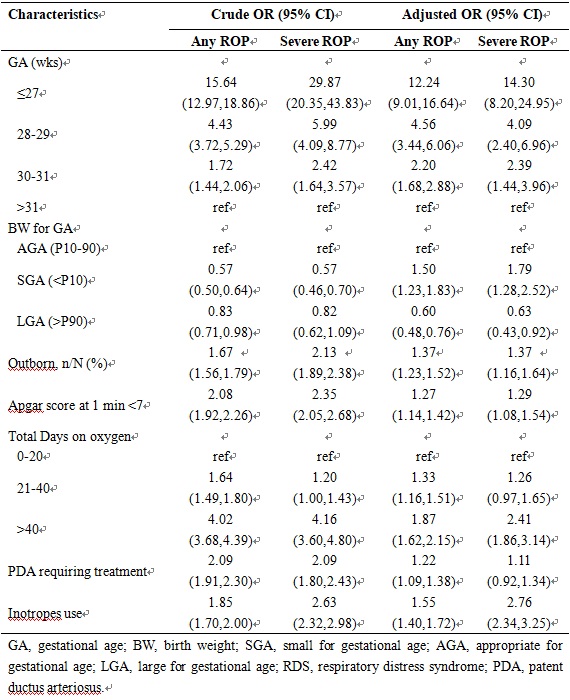Neonatal General
Neonatal General 11
84 - Incidence, risk factors and evolving treatment of retinopathy of prematurity among very preterm infants in China
Monday, May 1, 2023
9:30 AM - 11:30 AM ET
Poster Number: 84
Publication Number: 84.43
Publication Number: 84.43
Hongping Xia, Xinhua Hospital Shanghai Jiao Tong University School of Medicine, Shanghai, Shanghai, China (People's Republic); Xuting Chen, Xin Hua Hospital affiliated to Shanghai Jiao Tong University School of Medicine, shanghai, Shanghai, China (People's Republic)

Hongping Xia, MD
Neonatologist, Department of Neonatology
Xinhua Hospital Shanghai Jiao Tong University School of Medicine
Shanghai, Shanghai, China (People's Republic)
Presenting Author(s)
Background: Retinopathy of prematurity (ROP) is a serious vaso-proliferative disease of the retina occurring in very premature infants, which may lead to visual impairment or blindness. National-level data on the incidence of ROP among preterm infants in China are lacking.
Objective: This study aimed to investigate the current incidence, risk factors for developing ROP and the main treatment practices in China.
Design/Methods: Preterm infants with gestational age (GA) < 32 weeks or birth weight (BW) < 1500g who were admitted to NICUs in the Chinese Neonatal Network (CHNN) and underwent ROP screening between January 2019 and December 2020 were enrolled in this study. Clinical data were retrieved from the electronic medical record system, and the medical records of retinal examinations were evaluated. ROP was categorized as severe ROP (type 1 or type 2 ROP) and low-grade ROP (not meeting type 1 or type 2 criteria). Maternal and infant characteristics were compared between the infants without ROP, with low-grade ROP, and severe ROP. Multiple logistic regression analysis was used to evaluate risk factors for severe ROP in preterm infants.
Results: This study included 16485 infants, among which 23.8% had any ROP, and 7.0% had severe ROP. Lower BW and younger GA were strongly associated with a higher incidence of ROP. Multiple logistic regression analysis showed that GA, small for gestational age (SGA) / large for gestational age (LGA), inborn, Apgar at 1 min < 7, total days on oxygen >40, and inotropes use were independent risk factors for severe ROP. Treatment was performed in 4.3% of infants. 74.6% of treated infants received intravitreal anti-vascular endothelial growth factor (anti-VEGF) injection, while 10.7% of infants only had laser treatment, and 9.0% of infants only had vitreoretinal surgery. The incidence of severe ROP in children's hospitals, general hospitals, and maternal hospitals was 9.4%, 4.8%, and 7.2%, respectively.
Conclusion(s): In preterm infants with GA < 32 weeks or BW < 1500 g, 23.8% had any stage of ROP, and 7.0% had severe ROP. The incidence of ROP in infants with GA ≥32 weeks and BW ≥1500 g is still high in China. Intravitreal anti-VEGF injection is the preferred treatment modality for ROP. Quality improvement projects are needed to improve the incidence of severe ROP in Chinese NICUs.

